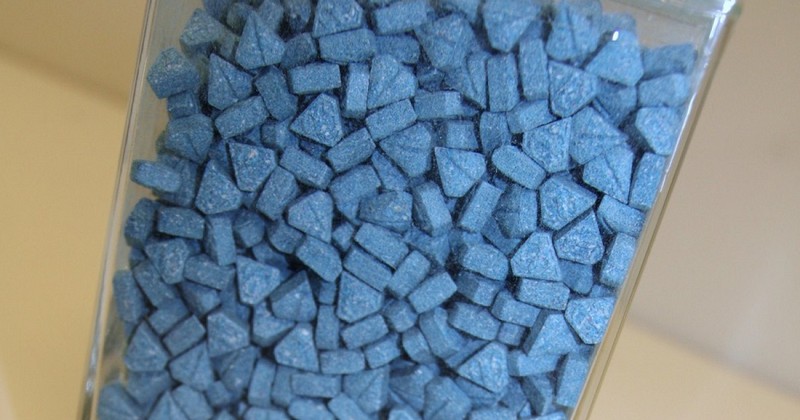The 6 main types of hallucinogenic drugs

These psychoactive substances are known to generate hallucinations in those who consume them.
Hallucinogenic drugs are a variety of substances that cause hallucinatory perceptions, or cause the subject to have a detachment from reality due to the consumption of the substance.
Once these substances (drugs) enter the Central Nervous System (CNS) the person experiences altered states of consciousness, which can vary depending on the type of hallucinogenic drugs and the tolerance level of the subject who consumes them. the subject who consumes them.
In the following lines we will see which are the characteristics of the main types of hallucinogenic drugs.
Main types of hallucinogenic drugs
From here on we will see a list of the main types of hallucinogenic drugs that exist, and some of their most characteristic effects.
1. LSD
LSD is a compound derived from the rye fungus. It is white in color and soluble in water, besides being completely odorless. Originally this drug is produced in crystal form, to be later ground and converted into powder.
The effects of this drug are called "trips" by its users, who cannot be sure if the effect of the drug will be pleasant or unpleasant. The main effect of this drug is to to interrupt the serotonin receptors (5-HT- receptors), in addition to producing hallucinations.in addition to producing hallucinations.
2. Mescaline
This drug is of the alkaloid type with hallucinogenic properties. The most common way of consuming mescaline is by chewing peyote (Mexican cactus), but a tea-like infusion can also be prepared.
The effects are not too far from those we reviewed above with respect to LSD. The most significant difference is in the duration time of the effects; those of LSD last approximately 8 to 10 hours, while in this case the effects can last up to 3 days. the effects can last up to 3 days..
Ecstasy
This drug is also known as MDMAIt belongs to the family of amphetamines, and is a stimulant, so its use generally causes people to experience feelings of heightened pleasure and mental stimulation. Ecstasy is therefore a very popular recreational drug.
Although the effects may seem good, they are not naturally regulated by the organism, so the negative effects end up being greater than the "positive" ones, which consist mainly of a transitory sensation of wellbeing.
4. Phencyclidine
This is a dissociative drug, which apart from having hallucinogenic effects like the rest, also possesses an important anesthetic effect.. The most common name for this drug on the streets is "angel dust", and it is presented as a crystalline powder that is soluble in water, although it is also consumed in pills.
The effect of this drug lasts less than those previously presented, approximately 4 hours, and causes the subject to experience hallucinations. the subject experiences hallucinations, accompanied by intense states of euphoria, and some distortions concerning the and some distortions of the senses.
5. Cannabis derivatives
These drugs are not considered hallucinogenic as such, but they present hallucinatory effects in many of those who consume them, which is why they are in this ranking. The main components of these drugs are THC and CBD..
These drugs cause significant alterations in perception and hallucinations. It is also common that when their effect is wearing off, the subject experiences an atypical increase in appetite.
6. Dimethyltryptamine
From the tryptamine family, dimethyltryptamine is a rare drug that is often consumed in multiple forms, the most popular of which is in cigarette form, although it can also be administered by injection or inhalation.
The effects are much shorter than those of the previous drugs, approximately 5 to 30 minutes maximum. Despite its short effect, the hallucinations that occur after consumption are usually quite intense.
The risks of using these substances
This variety of drugs have a series of varied risks for those who consume them, from severe behavioral alterationsThese risks include severe behavioral alterations, a possible withdrawal syndrome when they stop being consumed (not in all cases), and even alterations at the organic level related to the brain's neurotransmitters.
These risks depend to a large extent on a series of factors, such as the amount of consumption and the time during which the subject has been ingesting the substance, as well as the level of tolerance that the person has towards a given substance. Those with low tolerance do not need much consumption to be affected by the hallucinogenic effects of these substances. With time and frequency of use, people become more tolerant.
Another of the risks of hallucinogenic drug use is that they play an important role as before the subject goes on to consume other types of drugs that are more potent and dangerous for his health. to their health.
For example, people who frequently consume cannabis have a high probability of going on to consume other drugs such as LSD, ecstasy, or mescaline. When the person builds up a tolerance, it becomes more difficult to achieve the same pleasurable sensations associated with the use as at the beginning, and experimentation with other psychoactive substances is resorted to.
Where do these drugs come from?
A large number of hallucinogenic drugs come from Latin American and African countries. For example, peyote mushrooms originate from Mexico, from which Mescaline is extracted.
As for Europe, there is a type of hallucinogenic mushroom, also known as hallucinogenic mushroom; it is the amanita muscaria or false oronja, from which a substance called psilocybin with psychoactive properties can be obtained.
However, not all types of hallucinogenic drugs arise from substances present in mushrooms.
Bibliographical references:
- Gahlinger, P.M. (2001). Illegal Drugs: A Complete Guide to Their History, Chemistry, Use and Abuse. USA: Sagebrush Press.
- Mahoney A., Evans, J. (2008). Comparing drug classification systems. AMIA Annual Symposium Proceedings: 1039.
(Updated at Apr 13 / 2024)